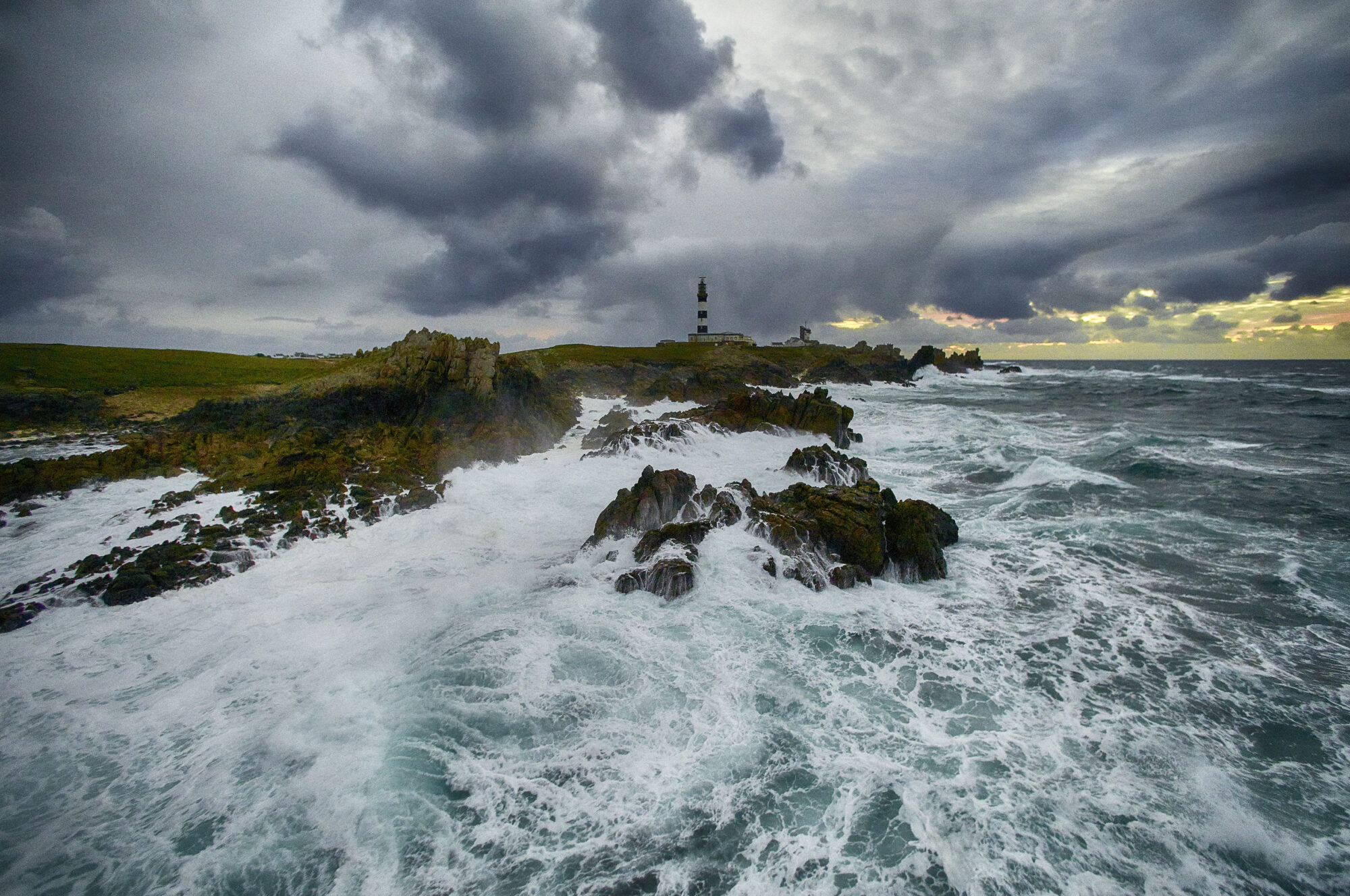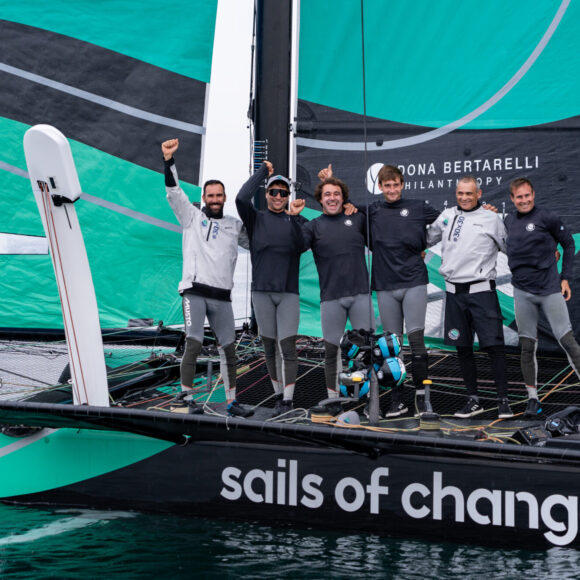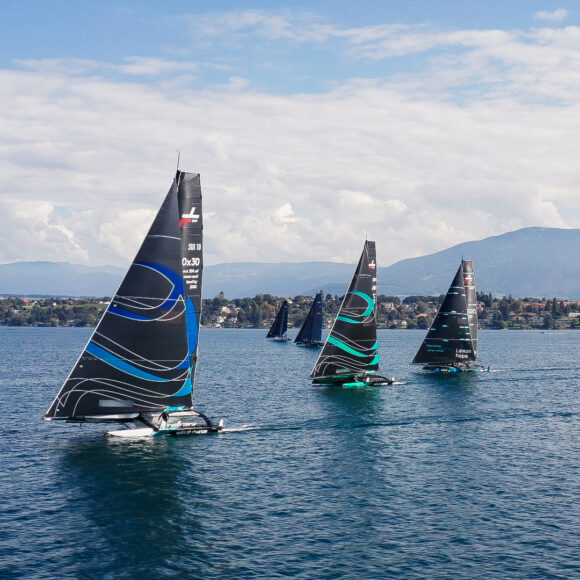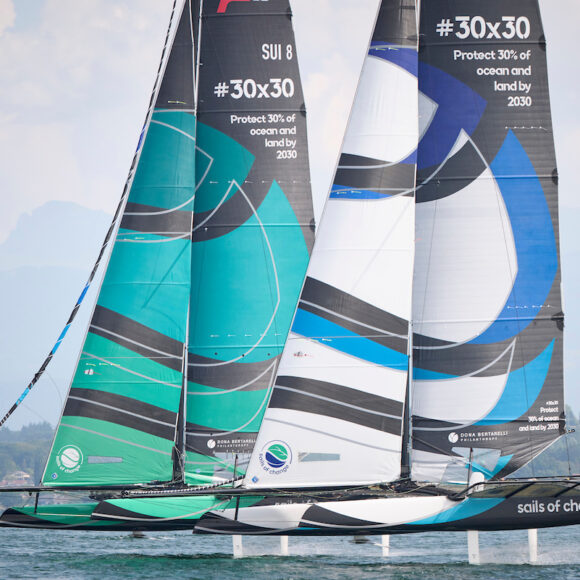Whilst the standby for Sails of Change (the largest racing multihull ever built, ex-Spindrift 2) commenced on 1 November 2021 in La Trinité sur Mer in south-west Brittany, the 1993 decision to select Ushant as the point at which the stopwatch starts ticking has always been associated with the Western Approaches and the Créac’h lighthouse, for measuring the length of the course around the world for the Jules Verne Trophy…
Of course, it was Yves Le Cornec who initiated this challenge to circumnavigate the ocean planet. Indeed, during a delivery trip, he noted that the large multihulls of the nineties were able to post an average speed of thirteen knots or more over twenty-four hours. However, to travel faster than Phileas Fogg and his valet Jean Passepartout (‘Around the World in Eighty Days’ (Tour du monde en 80 jours), a novel by Jules Verne which was serialised in 1872), all that was required was the ability to maintain an average speed of 11.25 knots over a direct course (great circle route) of 21,600 miles, or 40,003 kilometres, which corresponds with the circumference of the Earth at the equator.
In short, from late 1990, following Florence Arthaud’s victory in the Route du Rhum race and that of Titouan Lamazou in the first Vendée Globe, a small committee gathered together aboard Dany and Yvon Fauconnier’s barge, with ‘Mickey’ (Yves Le Cornec) at the helm, together with Jean-François Coste, Eugène Riguidel, Jean-Yves Terlain, Loïck and Bruno Peyron, who were subsequently joined by Philippe Monnet, then the New Zealander Peter Blake (crowned Whitbread champion 1989 on Steinlager) and Briton Robin Knox-Johnston (winner of the first Golden Globe Challenge 1968-69).
One course and one start venue
Olivier de Kersauson, the first president of the ‘Tour du monde en 80 jours’ association fought tooth and nail to have the port of Brest as the start venue, but others were more in favour of the future floating light, which was due to be installed offshore of the island of Ushant (but ultimately failed to materialise, the TSS: Traffic Separation Scheme being adopted instead). At the end of the next meeting, the most international venue possible was logically deemed to be the Western Approaches, between Lizard Point (reference for the North Atlantic record between New York and Cornwall) and the Créac’h lighthouse to the north-west of Ushant, the most powerful light in Europe with a range of 60 km (32 miles).
All that remained was to define the course, which was set out in the rules that are still in force today and span a single sheet of paper: the requirement is to “go around the world leaving the Cape of Good Hope, Cape Leeuwin and Cape Horn to port” before crossing the start line again in the opposite direction. There are no limits on the size of yacht, the type of boat (solely that is propelled by sails), or the number of crew… And given the symbolism that colours everything to do with this Jules Verne Trophy inspired by the 19th century novelist, the association has as its patron the Ministry for Culture, which launched a competition to create the Trophy itself: the sculpture by Tom Shannon that won this challenge has since been stored at the National Maritime Museum in Paris.
A stellar time that has stood since 2017: 40d 23h 30’!
The official Jules Verne Trophy announcement was made on 20 October 1992 in the function rooms of the Yacht Club de France in the presence of three ministers: Jack Lang (culture), Charles Josselin (sea) and Frédérique Bredin (sports), accompanied by legendary French sailor Bernard Moitessier… And since 1993, eight other reference times have followed on from that set by Bruno Peyron (Commodore Explorer): Peter Blake and Robin Knox-Johnston (Enza-New Zealand in 1994), Olivier de Kersauson (Sport Elec in 1997), Bruno Peyron (Orange in 2002), Olivier de Kersauson (Geronimo in 2004), Bruno Peyron (Orange II in 2005), Franck Cammas (Groupama 3 in 2010), Loïck Peyron (Banque Populaire V in 2012) and Francis Joyon (IDEC Sport in 2017).
However, by adding together all the best times over the six sections of this course around the ocean planet (Ushant-Equator, Equator-Good Hope, Indian Ocean, Pacific Ocean, Horn-Equator, Equator-Ushant), the total time comes to 37 days 02 hours 46 minutes… A round the world challenge! An oceanic record is only recognised by the WSSRC (World Sailing Speed Record Council) if it has been improved upon by at least a minute (article 19.c).
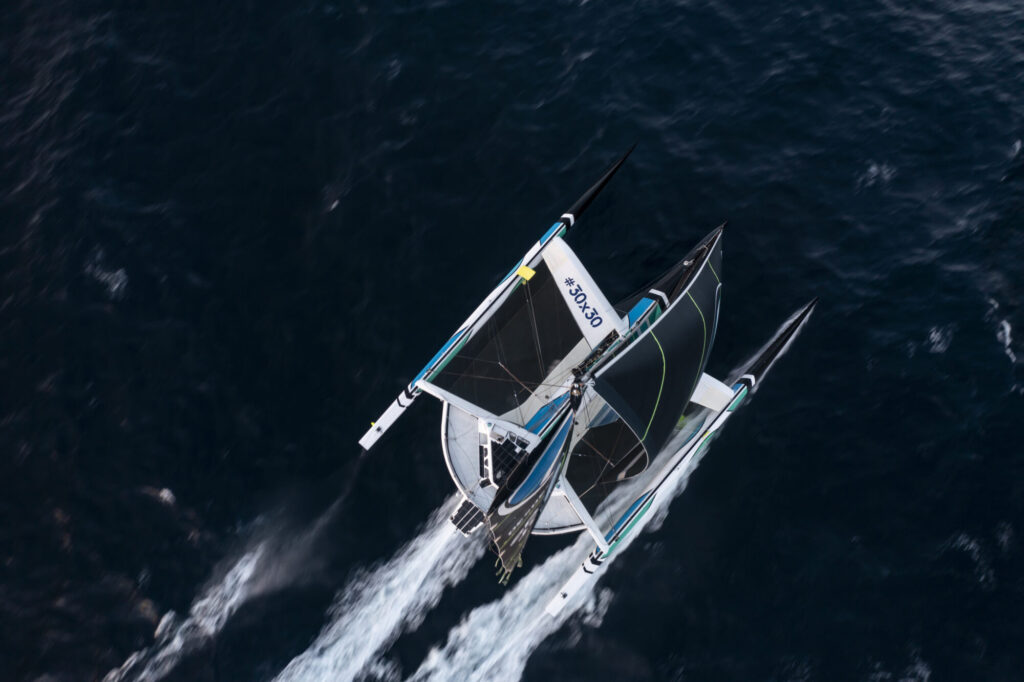
Sails of Change has been on standby in La Trinité sur Mer since 1 November 2021 and will remain so until 15 January 2022: three codes signal the state of play with ‘code red’ indicating that the ‘weather window’ is not favourable, ‘code yellow’ meaning that a start can be envisaged in the next 72 hours and ‘code green’ detailing a start is very likely within 24 hours. The team is currently in code yellow.
All that remains at that point is to make for the Jules Verne Trophy start line off Ushant, where the French representative of the WSSRC (Claude Breton) is responsible for monitoring the boat’s position on the Yellow Brick ‘tracker’, because since Thomas Coville’s solo round the world attempt in 2016, the timekeeper no longer needs to be in attendance off the Musée des Phares & Balises (Lighthouse and beacon museum) of Créac’h… Prior to that, the person who had this role had to be able to see the boat from the aforementioned lighthouse (less than four miles away, or under 7.4 km from the coast of Ushant) in order to be able to set their stopwatch in motion!
2021 crew on Sails of change
Yann Guichard – skipper
Dona Bertarelli – onboard reporter
Benjamin Schwartz – navigator
Jacques Guichard
Xavier Revil
Duncan Späth
Jackson Bouttell
Thierry Chabagny
Grégory Gendron
Julien Villion
Yann Jauvin
Jean-Yves Bernot – onshore router
